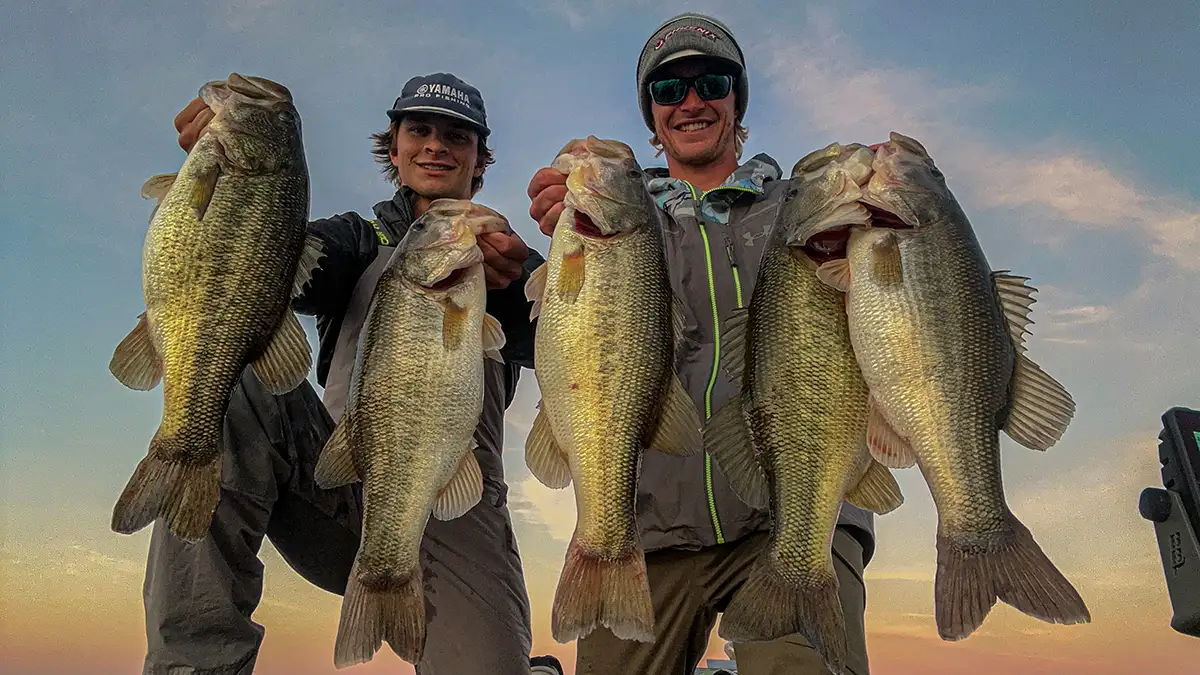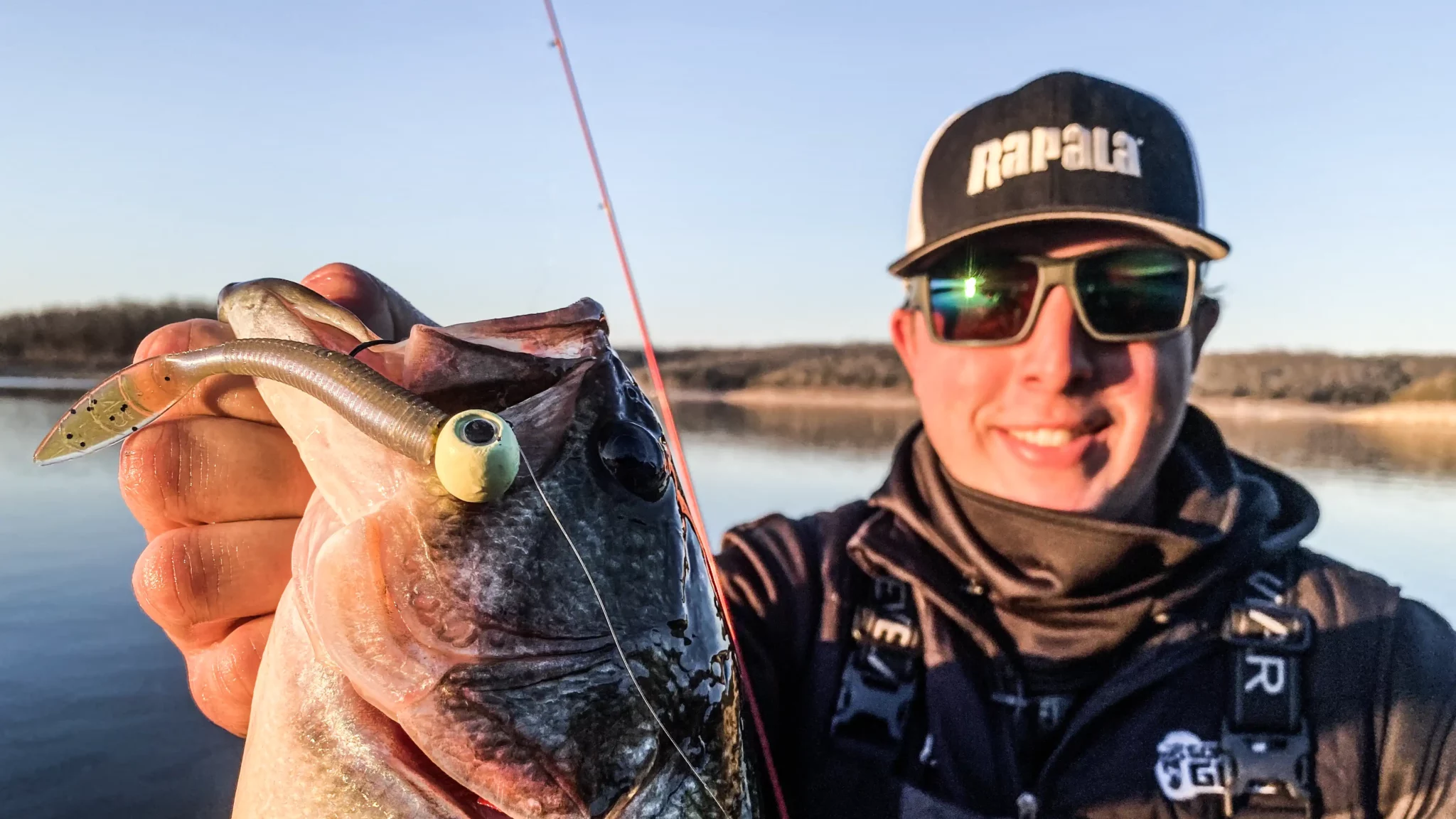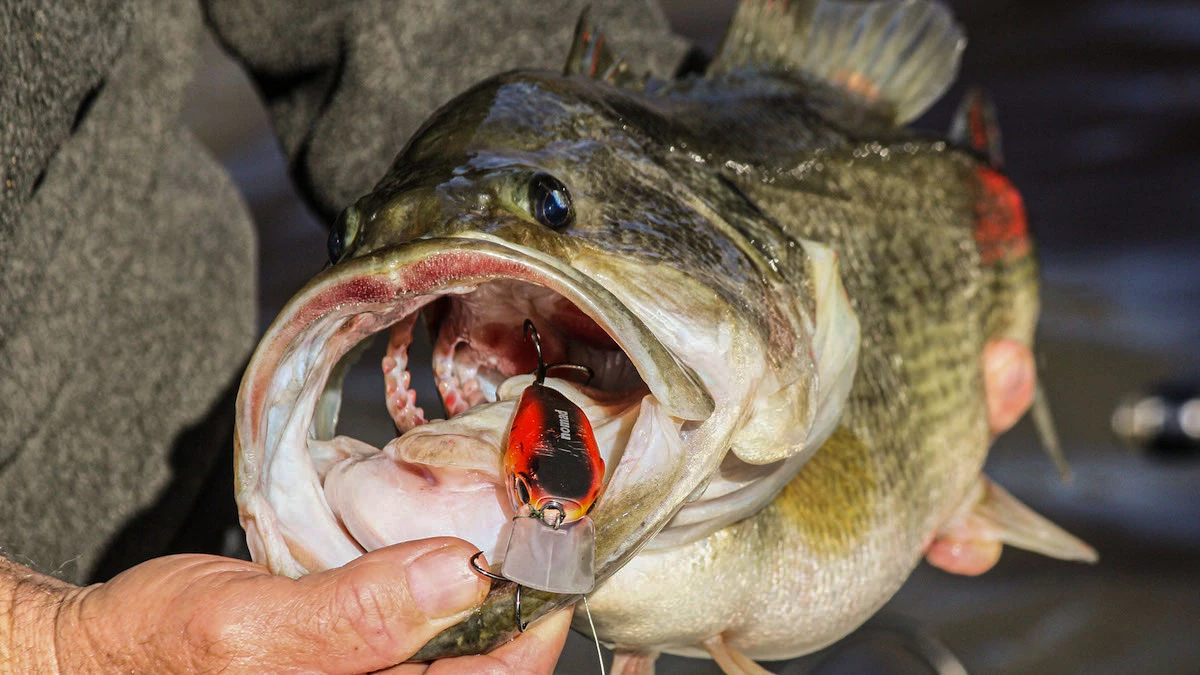Throughout the southern part of the United States, big largemouth bass are required to win the majority of bass fishing tournaments. This is true for most of the year. For a small window, however, smallmouth seem to dominate on lakes scattered all over the southeast United States. This tends to happen in the winter months, creating a fantastic opportunity to catch some trophy smallmouth.
One of the most popular methods for targeting smallmouth in this part of the country is a Damiki rig. The Damiki rig gets its name from the fact that Damiki made the first bait, the Armor Shad that was dedicated to this technique. This feature will highlight exactly how and where to fish a Damiki rig for smallmouth bass across the southern United States. Much like everyone refers to the entire category of castable umbrella rigs as A-rigs because the original one was called The Alabama Rig, everyone refers to this technique as Damiki rigging even though a lot of anglers use other plastics now.
CHOOSING THE RIGHT BODY OF WATER
Choosing the right body of water is essential for locating this pattern. Finding a lake or river system with a prevalent amount of smallmouth and bait is essential for this scenario to take place. Locations such as Dale Hollow and lakes across the Tennessee River System are all historically productive locations to practice this technique. The presence of baitfish such as threadfin shad are what causes this tendency among smallmouth.
These baitfish will suspend around points, ledges and current breaks throughout the winter. This causes smallmouth to fall close behind, often positioning in these locations to feed. While this may sounds simple, locating these smallmouth is often the hardest part to having a successful day of Damiki rig fishing. One of the biggest factors in congregating these smallmouth in a specific location is the presence of current.

CURRENT
Current is your best friend when it comes to finding and catching smallmouth throughout the South. This movement of water pushes baitfish throughout the water column. This causes predatory fish to become more active and susceptible to your bait. This current also positions bass in predictable locations, allowing you to efficiently fish productive areas. Areas that get hit hardest by the current creating a seam or hard spot are typically great places to start.
Smallmouth will often position tight to cover in these areas, waiting to shoot out and feed as bait gets pushed down river by the current. On days where the current is less extreme, fish will suspend away from cover in search of suspended bait such as threadfin shad. While fishing can be tough in these conditions, this is still an effective time to target smallmouth with a Damiki rig as long as you know where to look.

WHERE TO LOOK
Choosing the right areas to fish in a crucial component for any style of fishing. This remains especially true when targeting smallmouth in the South. When targeting this species, there are a few locations that are always a high percentage spot to check. These locations include ledges, rocks and points. Current plays a major roll in all of these locations, however there doesn’t always have to be current. Major creek channels and points without current can still be a productive location.
While these less obvious locations are still productive, I typically like to start on the main lake. I will often start where the current is strongest and work my way down, gradually fishing more and more slack-water areas. However, if a portion of the lake is muddy I will typically steer clear of that area. This technique is traditionally most productive in clear water areas. One of the best ways to have a successful day using this technique is by being proficient with your electronics.

USING YOUR ELECTRONICS
One of the best ways to quickly locate and break down areas is using electronics. Tools such as side scan, down scan and forward facing sonar all play a roll in this style of fishing. While all these tools aren’t required, they really help cut down on wasted time on the water. I will often start by side scanning these locations looking for either bait or cover.
When fishing a ledge or point, graphing down the contour change looking for bait is a great way to target smallmouth in this location. Once you see a ball of bait, drop your trolling motor and look for any smallmouth that are close by. Once you find one, you will typically find a couple in this scenario. Casting your Damiki rig right above these fish using forward facing sonar is a great way to get them to react.
Another great location to target smallmouth using this technique is rock piles. Throughout the winter smallmouth relate to the rock piles and other hard cover. Fishing these rocks with a Damiki rig is an extremely effective way to catch smallmouth. Fish often sit close to the bottom in this scenario, making them hard to see on forward facing sonar. Using side scan to graph rock fields in search of high percentage locations is a great way to break down this type of structure. When fishing a damiki rig over rocks, its best to let your bait hover right above the bottom as you work it to the boat.

HOW TO FISH YOUR DAMIKI RIG
Once you find an active group of smallmouth, giving them an adequate presentation is key to getting bit. This all depends on the fishes mood, depth and current. When fishing in low current situations, a Damiki rig with a lighter style head is typically best. This gives the bait a slower fall and life-like movement as it glides through the water column. While this presentation often gets more bites, the slower fall makes targeting moving fish difficult. One of my go to lures for this technique is the Queen Tackle Live Sonar Tungsten Jig Head paired with a Strike King Baby Z-Too.
When targeting deep fish however, you can opt for a heavier head. This allows you to get your bait in front of the fish when they are moving quickly. This also helps for targeting fish that are deep in the water column. While throwing a heavier head is much more efficient, It hurts your landing percentage due to the larger sized jighead on light tackle. A heavy sized jighead is also a great choice when fishing for smallmouth in current. This allows you to keep your bait close to the bottom without the current washing it away. One of my go to Damiki rigs for this setup is the Picasso Lures Speed Drop Jig Head paired with a Missile Baits Spunk Shad.

DAMIKI RIG SETUP
Fishing a Damiki rig often involves big fish on light tackle. This makes having the right rod, reel and line combination extremely important. When fishing a Damiki rig, I’ll use two different setups based off the weight of my lure. Anything under a 1/2-ounce I’ll use a spinning setup, and for anything bigger I’ll use a casting setup.
For a spinning setup, I prefer a 7-foot medium action rod with a 3000 sized reel. The shorter rod allows for accurate casting, while the medium action gives the rod enough backbone to get fish in the boat. The 3000 sized reel allows for faster line retrieve and more control over your bait. One of my go to spinning setups for fishing a Damiki rig is the 7-foot Medium Abu Garcia Zenon paired with a Shimano Sustain FJ 3000HG. For line, I prefer 10-pound Hi-Vis Power Pro Braid connected to a 10-pound Berkley Trilene 100% Fluorocarbon leader.
With my casting setup however, I will run straight 12-pound fluorocarbon on a slightly heavier setup. A 7-foot 2-inch Medium-Heavy rod with a parabolic tip is my preferred action for this technique. This allows for enough backbone to handle a heavier sized lure, with a soft enough tip to not break your line. Running an 8-speed reel is also essential for this technique, as it helps you quickly correct inaccurate casts. One of my go to setups for this technique is the Abu Garcia Zenon X in the 8:1 gear ratio paired with a 7-foot 2-inch Medium Heavy Dobyn’s Champion XP.
Regardless of what Damiki rig you choose, targeting smallmouth using this method is a super fun way to catch some fish. This bait in conjunction with todays electronics makes for a deadly fish catching duo that’s sure to put some trophy bass in the boat this winter. While locating these fish can be challenging, factoring in current, bait, rock and todays electronics is sure to make for a successful trip. This features highlights what you need to know for damiki rigging southern smallmouth.

















